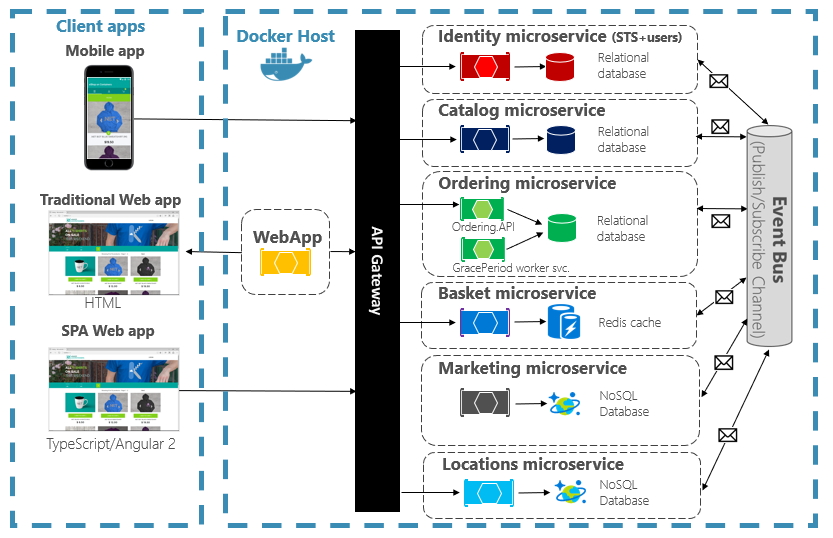The Java ecosystem is in a constant state of vibrant evolution, and nowhere is this more apparent than in the enterprise space. Since its transition to the Eclipse Foundation, Jakarta EE has steadily modernized the platform for cloud-native and microservices architectures. Now, with Jakarta EE 11 on the horizon, the community is poised for one of the most significant leaps forward in years. This upcoming release isn’t just an incremental update; it’s a foundational shift that embraces the latest advancements in the Java SE platform, promising to enhance developer productivity, application performance, and concurrency handling.
For developers, staying abreast of the latest Java EE news and Jakarta EE news is crucial. This shift impacts everything from daily coding practices to long-term architectural decisions. Jakarta EE 11 will introduce new specifications, refine existing ones, and, most importantly, align the enterprise standard with the modern Java landscape defined by recent Long-Term Support (LTS) releases. This article provides a comprehensive technical overview of what to expect in Jakarta EE 11, complete with practical code examples, best practices, and an analysis of how these changes will shape the future of enterprise Java development.
Embracing the Modern JVM: The Java 21 Baseline
Perhaps the most impactful change in Jakarta EE 11 is the move to Java SE 21 as the minimum required version. This decision aligns the enterprise platform with the latest LTS release of Java, unlocking a wealth of modern language features and JVM improvements for developers. This is significant Java SE news that directly influences the enterprise world, ensuring that Jakarta EE applications can be built and run on the most secure, performant, and feature-rich Java platform available.
What Java 21 Brings to the Table
By mandating Java 21, Jakarta EE 11 developers gain immediate access to powerful features that can simplify code and boost performance. Key among these are:
- Virtual Threads (Project Loom): A game-changer for concurrency, allowing for high-throughput, scalable applications without the complexity of traditional asynchronous programming. This is major Project Loom news and will be a cornerstone of modern Jakarta EE applications.
- Records: Simplify the creation of immutable data carrier classes, drastically reducing boilerplate code for DTOs and value objects.
- Pattern Matching for
switchandinstanceof: Enables more expressive and less error-prone conditional logic when working with complex type hierarchies. - Sequenced Collections: Provides a unified interface for collections with a defined encounter order, simplifying common collection operations.
This move also means developers can leverage the latest advancements from any OpenJDK distribution, whether it’s from Adoptium, Azul Zulu, Amazon Corretto, or BellSoft Liberica. Build tools are also a key part of this story; keeping up with Maven news and Gradle news is essential to ensure your build configurations properly target the Java 21 runtime.
Modern Dependency Injection with CDI
Jakarta EE has long championed Contexts and Dependency Injection (CDI) as its core component model. Jakarta EE 11 continues to refine this, pushing developers towards a more declarative, injection-first approach. For instance, while programmatic lookups are still possible, the preferred way to manage components like a Jakarta Persistence EntityManager is through clean, type-safe injection.
Here’s a practical example of a simple JPA entity and a service that uses CDI to manage the persistence context. This pattern remains a best practice and is further solidified in the new release.

// A simple JPA Entity
import jakarta.persistence.Entity;
import jakarta.persistence.GeneratedValue;
import jakarta.persistence.Id;
@Entity
public class Product {
@Id
@GeneratedValue
private Long id;
private String name;
private double price;
// Constructors, getters, and setters omitted for brevity
}
// A CDI Bean (Service) that uses the EntityManager
import jakarta.enterprise.context.ApplicationScoped;
import jakarta.inject.Inject;
import jakarta.persistence.EntityManager;
import jakarta.transaction.Transactional;
@ApplicationScoped
public class ProductService {
@Inject
private EntityManager entityManager;
@Transactional
public Product createProduct(String name, double price) {
Product newProduct = new Product();
// Set properties...
entityManager.persist(newProduct);
return newProduct;
}
public Product findProductById(Long id) {
return entityManager.find(Product.class, id);
}
}Revolutionizing Concurrency with Virtual Threads
One of the most anticipated areas of improvement in Jakarta EE 11 is its integration with Java 21’s virtual threads. The traditional thread-per-request model, while simple, struggles to scale to hundreds of thousands of concurrent connections. The latest Java concurrency news, centered on virtual threads, offers a solution. Virtual threads are lightweight, managed by the JVM, and allow developers to write simple, blocking-style code that scales with incredible efficiency.
Integrating Virtual Threads in Jakarta EE
The Jakarta Concurrency specification is being updated to officially support and leverage virtual threads. This will likely manifest through enhancements to the ManagedExecutorService, allowing developers to submit tasks that run on virtual threads instead of traditional platform threads. This is a paradigm shift for handling I/O-bound operations, such as database calls, external API requests, or message queue interactions, which are common in enterprise applications.
Consider a JAX-RS (Jakarta REST) resource that needs to perform multiple independent, slow network calls. Using virtual threads, these calls can be executed concurrently without consuming precious platform threads, dramatically improving the application’s throughput.
import jakarta.annotation.Resource;
import jakarta.enterprise.concurrent.ManagedExecutorService;
import jakarta.ws.rs.GET;
import jakarta.ws.rs.Path;
import jakarta.ws.rs.Produces;
import jakarta.ws.rs.core.MediaType;
import java.util.concurrent.Future;
// Assume this interface defines a client for an external service
interface ExternalDataFetcher {
String fetchData(String source);
}
@Path("/dashboard")
public class DashboardResource {
// Inject a ManagedExecutorService (to be configured by the server
// to use virtual threads)
@Resource
private ManagedExecutorService executor;
@Inject
private ExternalDataFetcher dataFetcher;
@GET
@Produces(MediaType.APPLICATION_JSON)
public String getDashboardData() throws Exception {
// Submit tasks to run concurrently on virtual threads
Future<String> userDataFuture = executor.submit(() ->
dataFetcher.fetchData("user-service")
);
Future<String> orderDataFuture = executor.submit(() ->
dataFetcher.fetchData("order-service")
);
Future<String> inventoryDataFuture = executor.submit(() ->
dataFetcher.fetchData("inventory-service")
);
// The code blocks here, but the underlying platform thread is not blocked.
// It is free to handle other requests.
String userData = userDataFuture.get();
String orderData = orderDataFuture.get();
String inventoryData = inventoryDataFuture.get();
// Combine the results into a JSON response
return String.format(
"{\"user\": %s, \"orders\": %s, \"inventory\": %s}",
userData, orderData, inventoryData
);
}
}This approach, which leverages Java virtual threads news, offers a simpler alternative to complex reactive programming models found in other frameworks, providing a more accessible path to building highly scalable services.
Advanced Data Access with the New Jakarta Data Specification
For years, developers working with Spring have enjoyed the productivity boost from Spring Data. The latest Spring news and Spring Boot news often highlight its powerful repository abstraction. The Jakarta EE community has taken note, and Jakarta EE 11 is set to introduce a brand-new specification: Jakarta Data. This specification aims to standardize the repository pattern, allowing developers to define data access interfaces with minimal boilerplate, leaving the implementation to the persistence provider (like Hibernate).
How Jakarta Data Works
Jakarta Data introduces a set of standard annotations and repository interfaces. Developers can define an interface, extend a standard Jakarta Data repository (e.g., BasicRepository or CrudRepository), and the container will provide a concrete implementation at runtime. This dramatically simplifies data access logic, making the code cleaner and more focused on business rules.
This is exciting Hibernate news as well, as Hibernate will be one of the primary providers implementing this new specification. It brings a highly requested, productivity-enhancing feature directly into the standard, reducing the need for custom DAO layers.

A Practical Jakarta Data Example
Let’s see how to define a repository for our Product entity using the proposed Jakarta Data API. Notice the use of standard annotations and query methods derived from the method name.
import jakarta.data.repository.CrudRepository;
import jakarta.data.repository.Repository;
import jakarta.data.repository.Query;
import java.util.stream.Stream;
// Define a Product entity (same as before)
// ...
// The Jakarta Data repository interface
@Repository
public interface ProductRepository extends CrudRepository<Product, Long> {
// The implementation for this method is generated automatically
Stream<Product> findByPriceGreaterThan(double minPrice);
// For more complex queries, use the @Query annotation
@Query("SELECT p FROM Product p WHERE p.name LIKE ?1 ORDER BY p.price DESC")
Stream<Product> findByNameContaining(String namePattern);
// Standard CRUD methods like save(), findById(), findAll(), deleteById()
// are inherited from CrudRepository.
}
// A service class using the injected repository
import jakarta.enterprise.context.ApplicationScoped;
import jakarta.inject.Inject;
import java.util.List;
import java.util.stream.Collectors;
@ApplicationScoped
public class AdvancedProductService {
@Inject
private ProductRepository productRepository;
@Transactional
public List<Product> getPremiumProducts(double minPrice) {
// Use the custom finder method with a Java Stream
return productRepository.findByPriceGreaterThan(minPrice)
.collect(Collectors.toList());
}
public Product saveNewProduct(Product product) {
return productRepository.save(product);
}
}This approach is a massive step forward for Jakarta EE, providing a standardized, type-safe, and highly productive way to interact with databases.
Best Practices and Ecosystem Integration
Adopting Jakarta EE 11 successfully requires more than just learning new APIs; it involves embracing modern development practices and understanding its place in the broader Java ecosystem news. The entire landscape is evolving, with innovations like Spring AI and LangChain4j bringing AI capabilities to Java, demonstrating the platform’s versatility.
Modern Tooling and Testing
Your development workflow must be updated for Jakarta EE 11. Ensure your pom.xml (Maven) or build.gradle (Gradle) files are configured for Java 21 and include the new Jakarta EE 11 coordinates. For testing, the combination of JUnit 5 and mocking libraries like Mockito remains the standard. The latest JUnit news and Mockito news often include features that make testing CDI beans and repository interfaces easier, allowing for robust unit and integration tests.

Performance and Security
From a performance perspective, the adoption of virtual threads is a headline feature. It promises to boost the throughput of I/O-bound applications significantly, which is a key topic in Java performance news. However, it’s not a silver bullet; CPU-bound tasks still require careful management. On the security front, moving to Java 21 is a critical step. The latest Java security news consistently highlights the importance of running on up-to-date JVMs to receive the latest security patches and cryptographic updates.
Tips for Migration
- Start with Java 21: Begin by migrating your existing Jakarta EE applications to run on Java 21. This will uncover any immediate dependencies or libraries that need updating.
- Adopt New APIs Incrementally: You don’t have to rewrite everything at once. Start by using Jakarta Data for new entities or refactoring a few REST endpoints to use virtual threads for asynchronous operations.
- Stay Informed: Follow the official Jakarta EE specifications, mailing lists, and community blogs. The platform is developed in the open, providing a transparent view of upcoming changes.
Conclusion: The Bright Future of Enterprise Java
Jakarta EE 11 represents a pivotal moment for enterprise Java. By embracing Java 21 as its foundation, it unlocks a new era of performance, productivity, and modern development practices. The introduction of virtual threads provides a simple yet powerful model for building highly scalable applications, while the new Jakarta Data specification finally standardizes the repository pattern, a long-awaited feature for the community.
For developers, the message is clear: the future of enterprise Java is modern, efficient, and fully integrated with the best features the core platform has to offer. The time to start preparing is now. Begin by exploring Java 21’s features, updating your toolchains, and planning how you can leverage these powerful new capabilities in your next project. Jakarta EE 11 is not just an update; it’s a reinvigoration of the platform, ensuring that Java remains a top choice for building robust, scalable, and maintainable enterprise systems for years to come.

